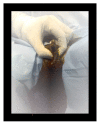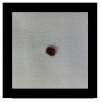Acute Urinary Retention in the Male Child from Urethral Calculi: A Report of Three Cases
- PMID: 31218090
- PMCID: PMC6537023
- DOI: 10.1155/2019/5762139
Acute Urinary Retention in the Male Child from Urethral Calculi: A Report of Three Cases
Abstract
Urinary stones are uncommon in children. Urethral location of calculi can give rise to various clinical manifestations. We report three cases of urethral lithiasis presenting with acute urinary retention in children.
Figures















References
-
- Collard L. Lithiase urinaire de l'enfant et l'adolescent. Revue Medicale de Liege. 2004;59(4):221–226. - PubMed
-
- Akhtar J., Ahmed S., Zamir N. Management of impacted urethral stones in children. Journal of College of Physicians and Surgeons Pakistan. 2012;22(8):510–513. - PubMed
-
- Arifi M., Halim Y., Bouhafs M. A., et al. Traitement par lithotritie extracorporelle des calculs du haut appareil urinaire de l'enfant. Progrès en Urologie. 2006;16:594–597. - PubMed
Publication types
LinkOut - more resources
Full Text Sources

